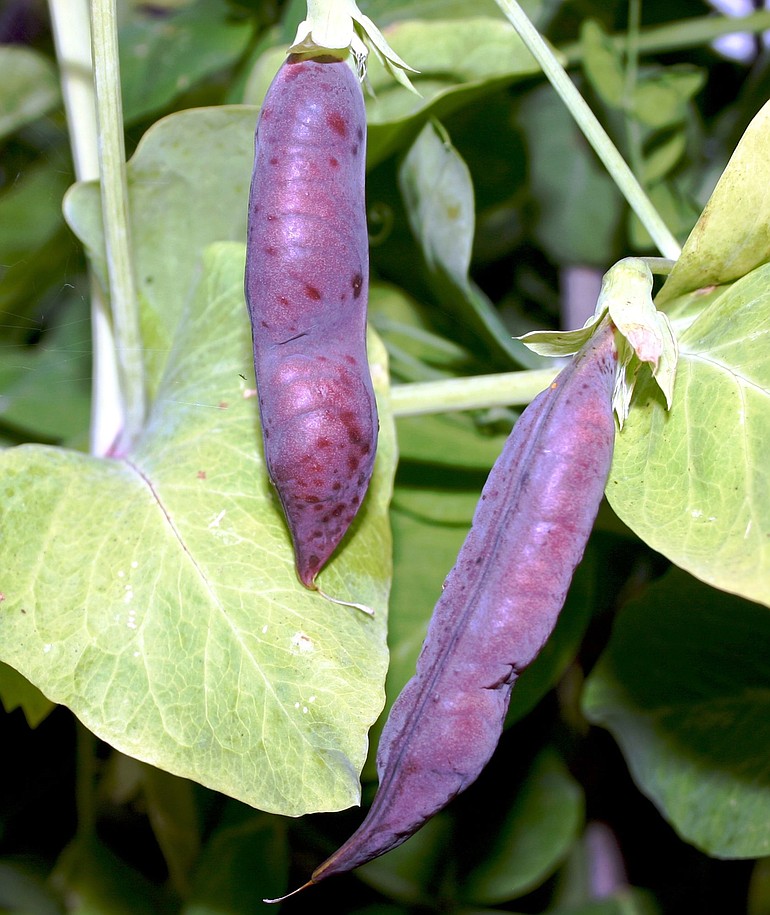Last week, at a friend’s barbecue party, the topic of string beans came up. I recently spent a few days researching green beans and very likely had more information than this casual conversation warranted. Now that I think about it, I may have brought up the conversation because my research had unearthed an interesting statement and I wanted to hear a few gardeners’ opinions.
On the University of Illinois Extension website, http://urbanext.illinois.edu/veggies/beans.cfm, one reference to green beans says, “Green bush beans were formerly called ‘string beans’ because fiber developed along the seams of the pods. Plant breeders have reduced these fibers through selection, and green beans are now referred to as ‘snap beans.’”
Excuse me. I guess I missed that memo.
Other sites taught me more, including the fact that Calvin Keeney, called the “father of the stringless bean,” bred the first stringless bean in 1894. Until a century ago, the pods had tough strings that cooks had to remove before cooking, hence the name “string beans.” The snap beans you find in markets today are almost all stringless.
I could swear that my mother talked about stringing beans for Thanksgiving dinner. Or was it my grandmother telling us stories about her days of bean stringing?
Beans are considered tender, warm-season vegetables that rank second to the tomato in popularity in home gardens. There are over 130 varieties of snap bean, selected for the succulence and flavor of their pods. Pod color can be green, golden, purple, red or streaked. Shapes range from thin fillet types to wide Romano types. French Haricots verts green beans are bred for flavorful pods.
Woody framework
Shrubs, vines, and other woody plants provide the year-round framework on which to build your seasonal display of annuals, perennials, and bulbs.
Many woody plants are remarkably colorful, with flowers, fruits, fall foliage, and bark providing lasting beauty. Many also cheerfully accept smaller plants around their feet or climbers scrambling up their limbs and over their shoulders to produce a second round of blooming.
Plant clutches of spring-blooming snowdrops and daffodils or summer-blooming Lilies among your shrubs to add color in another season.
Choosing colors
Colors directly opposite one another on the color wheel will give the greatest contrast in the garden. Examples are red and green, blue and orange, yellow and purple. These opposites are called complementary colors. When planted next to each other in the garden, both colors stand out clearly.
Contrast diminishes as colors draw nearer to one another on the wheel. Adjacent colors, such as yellow and orange, give harmony to a particular area of the landscape. Some homeowners prefer to use variations of only one or two colors, creating an all white garden or a pink and white garden.
Each landscape and the preferences of the homeowner are unique. By using basic color principles, you can develop as vibrant or as subtle a landscape as you want.
Imagine the deep blue of lavender planted with a surround of yellow, orange and red nasturtiums. Picture a green meadow with only clear, salmon-pink Shirley poppies.
White is the color of light. White flowers should play a part in every garden. Many gardeners want an all-white garden, which of course will include a myriad of shades and hues.
Seen against other colors, white can change a great deal. Like the flavor of mushrooms, white takes on the nuance of your color recipe. White makes the hot reds and yellows stand out. It melds the cool pinks and blues together.
Sharing the garden
Whenever I have the chance to share my garden life with another gardener, all the creative possibilities of gardening expand twofold.
Ideas flourish when you are in the company of a like mind. Sharing a strong mutual interest, two gardeners will seldom run out of conversation and often form a lasting, lifetime friendship. This is why I look forward to guests visiting my garden. I appreciate the good energy they leave behind once the visit is over.
My mom loves nasturtiums, just as her mother did. I think of them both every year as I plant the plump, wrinkled seeds several weeks before the summer garden season is in full swing.
From the moment a seedling sticks its head up and out of the soil, I anticipate the cheerful flowers as well as the look of delight on the faces of visitors when they see the flowering nasturtiums trailing down from every pot, planter and hanging basket.
Robb Rosser is a WSU-certified Master Gardener. Reach him at Write2Robb@aol.com.



